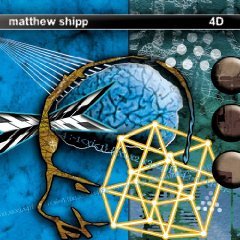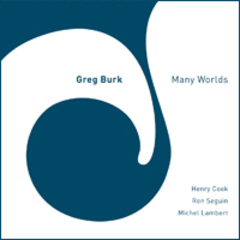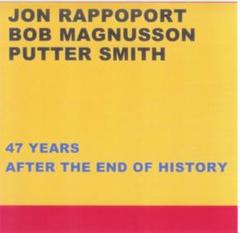Matthew Shipp, "4D" (Thirsty Ear)
Matthew Shipp's records are like letters, describing through his piano whatever emotions, obsessions and encounters he's gone through lately. When he made "4D," he must've been feeling a little nostalgic, a little bruised, and (these are all solo performances) a little lonely at age 50.
On the more purely musical side, Shipp poses some hypotheses and works 'em out: What if Rach met Bach and smoked some pot ("4D")? What if Thelonious Monk's right hand and Cecil Taylor's left elbow played a duet ("The Crack in the Piano's Egg")? What if he impregnated the beatnik rhythm of Monk's "Epistrophe" with an entirely different melody and then got angry at his own confidence ("Blue Web in Space")? What if Grieg staged a Riverdance version of a nursery rhyme ("Frere Jacques")? This stuff is fun.
On the other hand, such entertaining exercises seem like a distraction from what lies heaviest on Shipp's mind. His most abstract moments here carry distinct whiffs of apprehension, bewilderment, argument, hesitation, compulsive repetition. And the journey of his heart is unmistakable. In "Equilibrium," joyful arpeggios turn to sour disgust and back to joy again, setting up the listener for later tales of ambivalence Shipp tells via standards (not normally a big part of his repertoire). "What Is This Thing Called Love?" stumbles with giddy energy toward near collapse, then gathers itself together to rush nervously onward. "Autumn Leaves" blends flowery sentimentality with twitches of awkwardness and prodding accusations. The facile beauty of "Prelude to a Kiss" borders on sarcasm. And damn, what a conclusion is "Greensleeves," with Shipp pouring out his hopes and dreams in waves of "MacArthur Park"-like euphoria before pounding them to a bloody pulp.
Shipp's soft touch and lazy rhythm, which often serve more intellectual explorations, are well suited to expressing the conflicted shivers of electricity that pass through the hapless bags of meat that we are. So when Cole Porter asks what love is . . . well, Shipp's got some kind of answer.
Greg Burk, "Many Worlds" (482 Music)
Greg Burk (not this writer but an avantian pianist based in Italy) has gotten himself a nice band. Now Burk can transport the aesthetic of mid-'60s Coltrane into the third millennium in ways I never imagined I'd hear from him.
The key utility player is Henry Cook, whose saxes and flutes lend distinctiveness to a variety of moods ranging from dewdrop African dawn to Ibiza day-bake/night-dance to Cecil-style intensity. A bit of a beauty slave, Burk owns just the crisp yet sensitive phalangial dexterity to maximize his devotion, yet he's properly untidy, always pushing his paint off the edge of the canvas. Bassist Ron Seguin keeps things in focus with the contained bigness of his sound -- dig his fibrous extended solo on "BC." And drummer Michael Lambert tickles a mess of cymbals, usually just suggesting that you imagine some kind of interior rhythm.
Not many Trane devotees allot equal respect to the rambling openness of McCoy Tyner and the elevational Indisms of Alice Coltrane (whose worldwide influence becomes ever more apparent). Greg Burk likes both, and Greg Burk concurs.
Jon Rappoport-Bob Magnusson-Putter Smith, "47 Years After the End of History" (Qpress)
"In the long run," writes pianist-painter-writer Jon Rappoport in his notes, "non-structures are more important than structures."
I don't agree; avoiding structures is the same as thinking out loud, which rises to the level of consistent art only in the cases of genii such as Borah Bergman or Larry Karush, and I suspect even they enter an improvisation with some kind of map in mind.
Luckily, here Rappoport gets support from two great bassists who don't agree with him either. Free improvisation amounts to mere footnotes in the vast biographies of Bob Magnusson and Putter Smith; here, each finds ways to lend structure to duets with Rappoport. After a unison or an alternating dialogue, Magnusson often diverts his deep, hard-surfaced pluck into a walk or a determined rhythmic line that gives Rappoport something to hang his clouds on. The more sympathetic partner is Smith, whose grave and grainy bowed bass amplifies the reluctant pondering of "Clipper Ship in the Milky Way" into an emotional cry that could connect with anyone.
Both bassists join the pianist's spontaneous rambles for the 20-minute title track, a coalition of shadings and delineations worthy of a Rappoport abstract painting. For dimensions, three is a good number.
So history ended when, in the early '60s? I guess it was the Beatles' fault.



